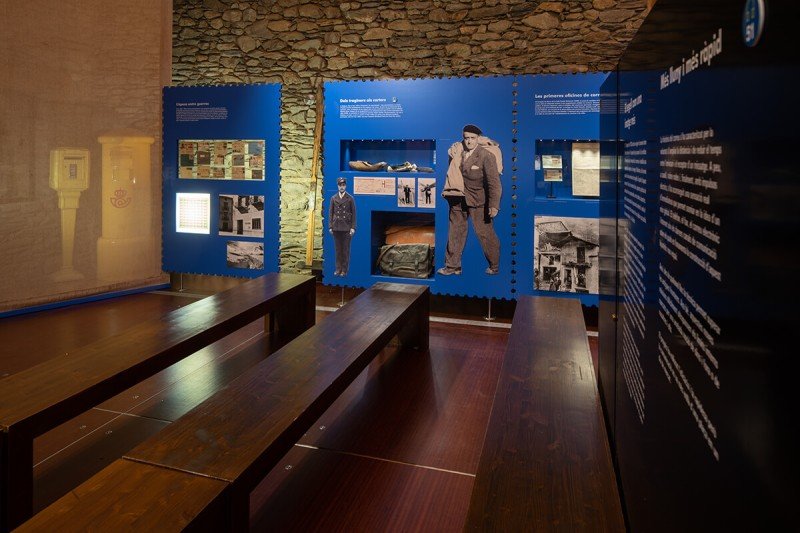The stamp as just another image
Before there was a mail service, the stamp was created as a means of guaranteeing payment for the sending of correspondence. The invention is attributed to Sir Rowland Hill of England who created the penny black in 1840 (black on account of the colour and penny because of its price), and it modified the old postal system. France issued its first stamp in 1849 with the images of a Greek goddess. The following year, Spain put stamps with the profile of Queen Isabel II into circulation.
On 1 August 1930, an agreement between the French and Spanish governments came into force, putting an end to the conflict of interests over the postal monopoly and establishing a joint operation, outside Andorra, for the postal service and the issuing of stamps. Since then and up to the present, this loss of sovereignty has been compensated for, among other things, by the recruitment of Andorran staff and recognition of the custom of not applying any tariffs to domestic and official mail.
In 1929, Correos put the first series of stamps with the name of Andorra and themes from the Andorran Valley son sale. La Poste did the same in 1932 under the name Vallées d’Andorre. However, these stamp issues were not regularised until the 1960s in the case of France and the 1970s in the case of Spain. The explanation for this change in issuance must be sought in the quantitative increase and qualitative improvement of the service and the desire to satisfy the potential demand of collectors.
Today, Andorra's existence no longer depends exclusively on tariff privileges, but also on its ability to make itself known as another European country. One of the ways of expressing this reality is through stamp issues, which, despite the loss of prominence of conventional mail, still retain the evocative power of images.
Every year, the Government of Andorra prepares an issue of stamps (between 12 and 15 per year) with an Andorran theme in conjunction with La Poste and Correos. Since the early 1980s, the Government buys the stamps with Andorran themes that are issued by Correos and La Poste to keep them. Each new acquisition is digitalized so that it can be shown to the population in the future. All the stamps issued by the two mail administrations can be viewed on the website Colnect.com.
The history of mail has been characterised by a desire to extend the distance and reduce the time between the sender and the receiver of a message. On foot, on horseback, on wheels and, finally, through electrical impulses, we have managed to reach a real sense of immediacy that allows us to dream of a global world. Telephone, fax, e-mail and the Internet are the latest communication channels on which the construction of this hypothetical new space is based.
Today, technology had made it possible to overcome the old borders from whatever location. However, these new relationships barely go beyond the internal boundaries marked by an entrenched notion of inside and outside, or of us and them. Progress has improved efficiency and speed, but communication has not moved beyond a square on a market day.




